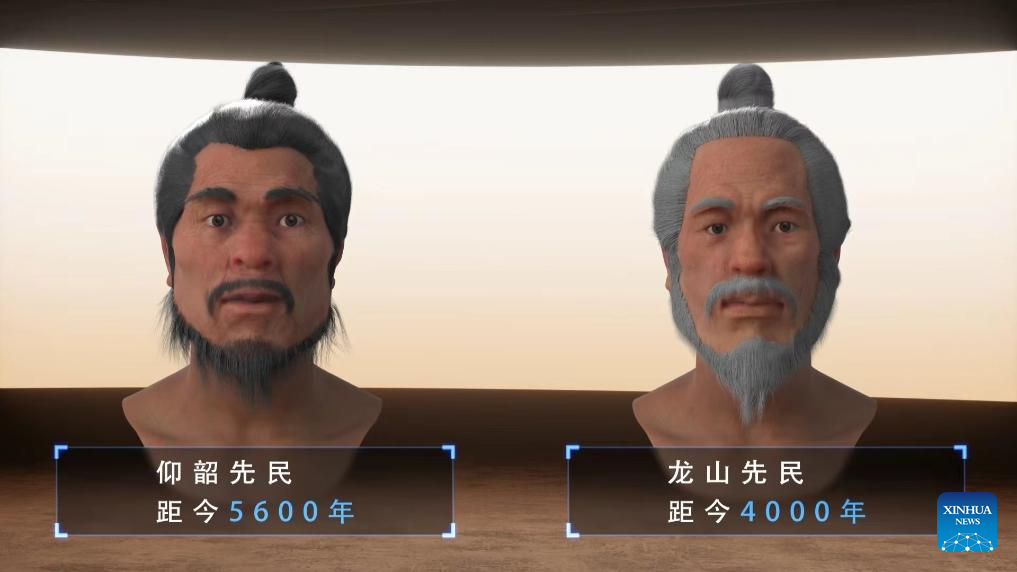
This image shows the facial reconstructions of two men who are believed to have lived during the Yangshao culture period 5,600 years ago (L) and the Longshan culture period roughly 4,000 years ago. Chinese archaeologists have unveiled facial reconstructions of two men who lived near the Yellow River, the cradle of Chinese civilization, during the Neolithic Age. One man, believed to have lived around 5,600 years ago during the Yangshao culture, was approximately 40 years old, while the other, from the Longshan culture period roughly 4,000 years ago, was around 50 years old.(Xinhua)
ZHENGZHOU, Sept. 24 (Xinhua) -- Chinese archaeologists have unveiled facial reconstructions of two men who lived near the Yellow River, the cradle of Chinese civilization, during the Neolithic Age.
One man, believed to have lived around 5,600 years ago during the Yangshao culture, was approximately 40 years old, while the other, from the Longshan culture period roughly 4,000 years ago, was around 50 years old.
These groundbreaking portraits were released on Tuesday by the Henan Provincial Institute of Cultural Heritage and Archaeology. The reconstructions were based on skulls unearthed during a recent excavation.
Given the absence of written or visual records from these ancient people, archaeologists meticulously gathered numerous data points from the skulls to create highly detailed 3D models.
Using these models, they reconstructed the muscles by referencing populations with the closest genetic background, while genetic analysis was employed to predict skin tone and hair characteristics, said Li Shiwei, deputy director of the institute's prehistoric archaeology research department.
"We believe our reconstruction accuracy could reach approximately 90 percent," Li said, underscoring the scientific precision of the process.
The skulls were discovered at the Yangshao Village site in central China's Henan Province during the fourth phase of excavation, which began in August 2020. The site holds great historical significance, as its first excavation in 1921 marked the birth of modern Chinese archaeology.
The facial reconstruction project was initiated last year, with the Henan institute collaborating with various organizations to bring the ancient faces to life.
"The project offers us a glimpse into the faces of our ancestors, providing a vivid insight into the diverse cultures in ancient society," Li said.
Currently, the research team is conducting further studies on ancient DNA to uncover more about the historical dynamics of prehistoric human populations. ■

This undated file photo shows archaeologists working during the fourth phase of excavation at the Yangshao Village site in Sanmenxia, central China's Henan Province. Chinese archaeologists have unveiled facial reconstructions of two men who lived near the Yellow River, the cradle of Chinese civilization, during the Neolithic Age.
One man, believed to have lived around 5,600 years ago during the Yangshao culture, was approximately 40 years old, while the other, from the Longshan culture period roughly 4,000 years ago, was around 50 years old.(Xinhua)

This image shows the facial reconstruction of a man who is believed to to have lived around 5,600 years ago during the Yangshao culture. Chinese archaeologists have unveiled facial reconstructions of two men who lived near the Yellow River, the cradle of Chinese civilization, during the Neolithic Age.
One man, believed to have lived around 5,600 years ago during the Yangshao culture, was approximately 40 years old, while the other, from the Longshan culture period roughly 4,000 years ago, was around 50 years old.(Xinhua)



